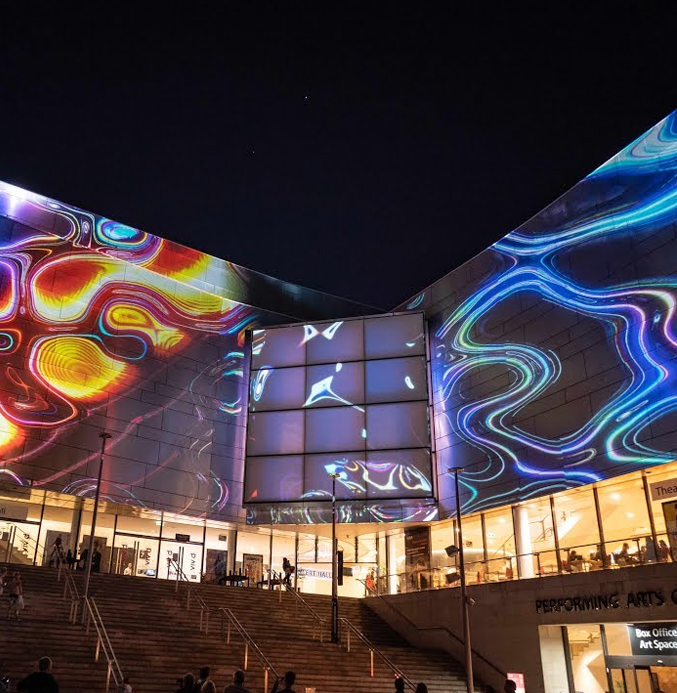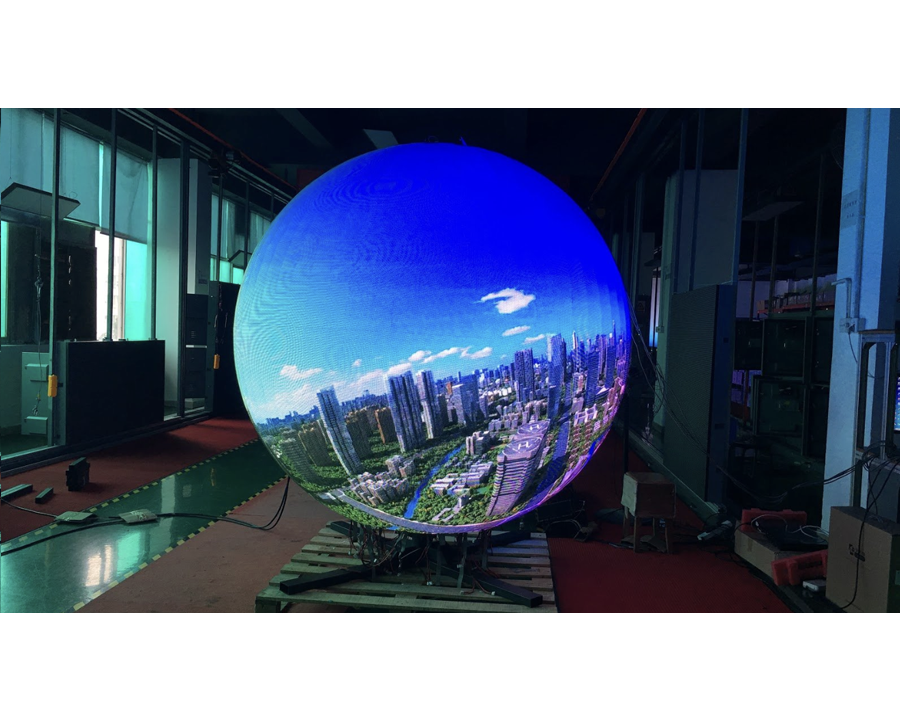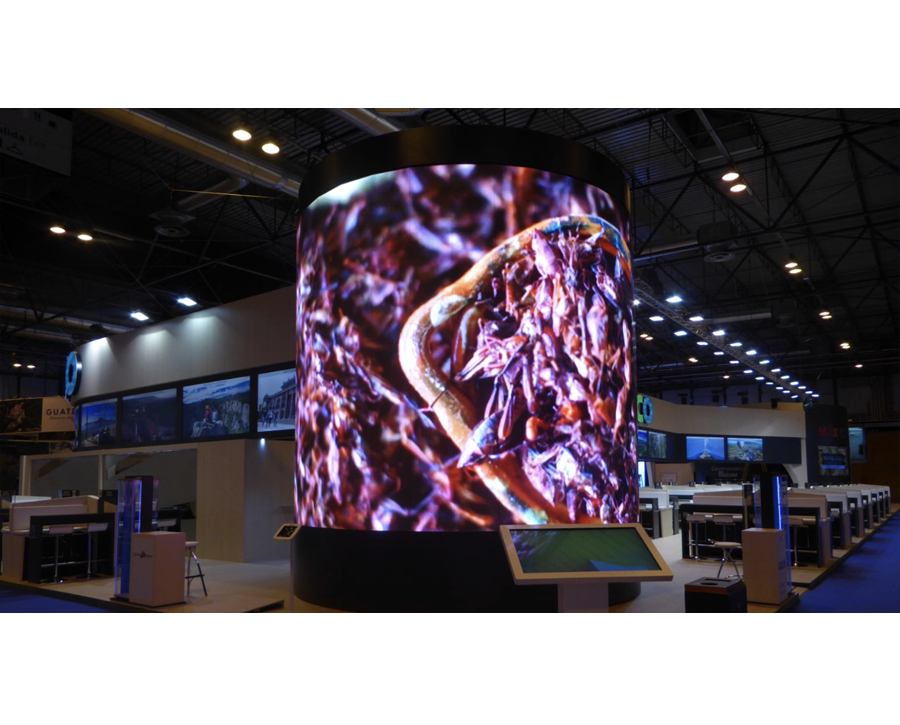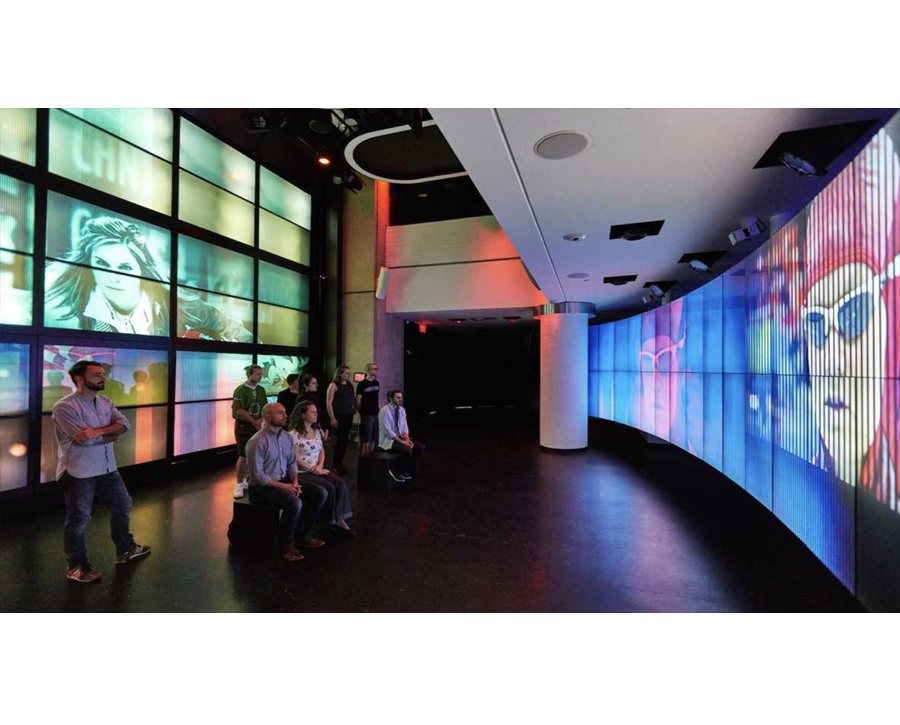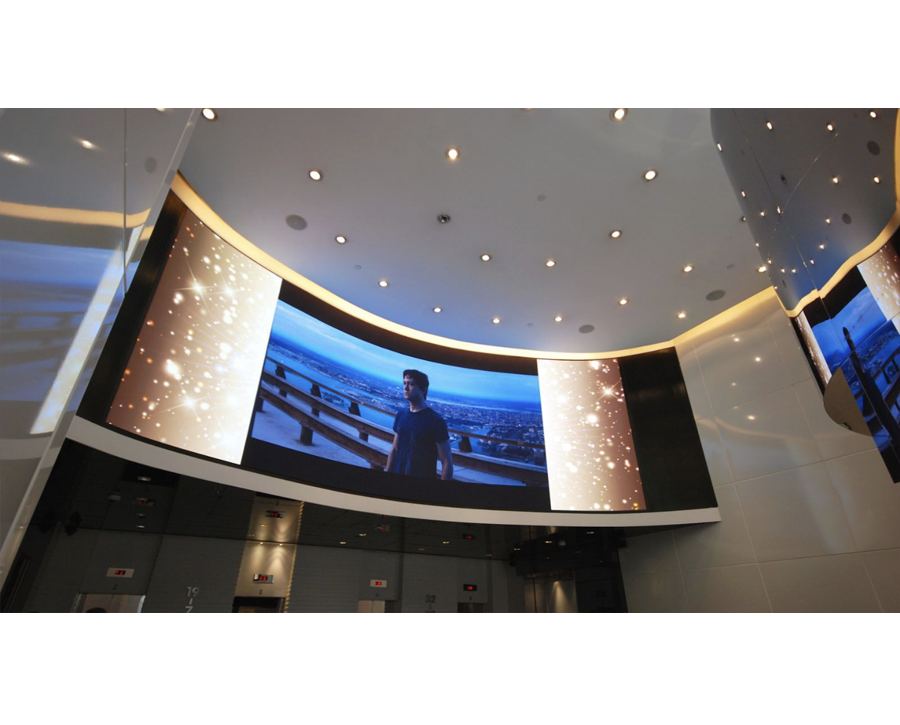
With advanced technology, the debate is always changing, while Curved LED walls and curved LED TVs both are up-to-date displays. These innovative screens bring an entirely new level of immersion and engagement, but they serve different purposes. Thus, knowing the differences would help in making a quite informed decision.
What Is A Curved LED Wall?
A huge digital screen generated in one piece by many LED panels sewn into seamless continuations of curved surface. Different from conventional flat screens offering a field of panoramic view. The curvature gives one greater immersion or makes the screen feel much bigger.
Curved LED walls are built from individual panels of LEDs. The panels are modular. Hence, you can build a screen of any size or shape you can think of. Each panel comprises thousands of tiny LEDs creating an enormously colorful and bright display. The LEDs are in a grid so that the quality of the image displayed is uniform over the entire display.
One of the salient features of curved LED walls is flexibility. You can design them in concave or convex shapes. Depending on your space and audience requirements. This flexibility makes them ideal for large-scale installations. You will often see curved LED walls in stadiums, arenas, and other entertainment venues where visibility and impact are crucial.
Curved LED walls are also great for showcasing high-resolution content. They show crisp, clear visuals from HD to 8K, even at a very close viewing distance. The general spacing between each individual LED is called the pixel pitch and can be adjusted to achieve the preferred resolution. The smaller the pixel pitch, the higher the resolution. This would turn the display suitable for detailed visuals or text-heavy content.
There are many applications. Ranging from presentation and branding in corporate to very striking digital signage in retail. Event organizers will use Curved LED walls for various events. Concerts, trade shows, and product launches where the dynamic visual attracts audiences. Their resistance to different weather conditions also makes them work outdoors. Therefore, it has been in use for quite a period of time without developing any operating issues.
What Is A Curved LED TV?
Curved LED wall is in the modular line of constructions, TV is only a single unit Curved screen but is arced. Adding an enriched sense of depth better than any flat one while reducing glare from all possible angles. Creating a consistent field of view. This feature makes movies and games feel more engaging. As the image wraps slightly around your peripheral vision.
They do vary in size, from about 40 to 75-inch screens, and run under display technologies. Such as 4K and 8K resolutions. High Dynamic Range, or even OLED or QLED panel displays that showcase spectacular visuals with deep blacks, bright whites, and an all-color palette.
Curved LED TVs have a huge demand for home theaters and gaming purposes. Their sleek design blends in with modern interiors. Which makes them functional and aesthetic for your living space. The features of smart TV include internet connectivity, streaming apps, and voice control. That enhances the user experience by easily accessing content and adjusting settings.
The major disadvantage of curved LED TVs is that their field of view is limited. While they do offer very great viewing for an individual who sits right in front of the screen. For people seated at sharp angles, the experience is not as great. This limitation makes them best suited for small groups or individual use.
Key Differences Between Curved LED Wall And Curved LED TV
Size
The size is another striking difference that exists between a Curved LED Wall and a Curved LED TV. A Curved LED wall is modular. It can be built with any size to suit the needs. It can hang on a whole wall or go up to being a mammoth outdoor screen. While on the other hand, the Curved LED TVs come in sizes that range from 40 to 75 inches with fixed dimensions. This makes them more practical for personal spaces but unsuitable for large venues.
Resolution
The resolution also differs entirely between the two. The resolution of a curved LED wall would be determined by the panel’s pixel pitch. A lower number of pixel pitch means higher resolution. Hence good for close-up viewing. On large displays, a low pixel pitch may be unnecessary for audiences usually kept far away. As for Curved LED TVs, they have fixed resolutions like 4K and 8K. Those are optimized for the smaller screen sizes and close viewing distances common in home use.
Price
Cost is another major factor. Curved LED walls due to their size, requirement for customization, and means of installation are much pricier. Moreover, the price includes not only the main LED panels. But also the base structure, software, and professional installation. Maintenance would also be costlier. Whatever the case, curved LED TVs are way cheaper. Personal use requires a one-time purchase with all features contained in the set.
LifeSpan
Durability is on the side of the curved LED wall. Since they are built for commercial use. They are designed to withstand continuous operation and harsh conditions. Many are water-resistant and dustproof. Making them suitable for outdoor use. Curved LED TVs, while durable for indoor settings, lack the ruggedness required for demanding environments.
Application
By defining where these technologies will be applicable, marked differences can easily be spotted. Generally, curved LED walls are useful for commercial usage, live advertising of events, or large presentations. Their size and striking effect make them perfectly fit to create immersion experiences in a wide public area. Curved LED TVs should ideally be put to personal uses. Granting a special viewing experience to movies, video games, and online broadcasting in less spatial areas.
Which Is Better for Commercial Use?
A curved LED wall, on the other hand, would be better suited to commercial use. Which inherently is scalable and will change due to the ambient conditions that occur within the environment. It provides invaluable display for businesses in everything from a retail outlet to any other event, and a more captivating way to engage your audience.
Curved LED walls are revolutionary in advertising. Their colors are vivid, and the brightness ensures that your content is outstanding even in bright outdoor conditions. The modular design lets you create unique shapes and sizes that fit with your brand’s message. For instance, a towering curved screen wall in a shopping mall will amaze passersby and attract them into your store.
Curved LED walls prove to be quite instrumental for live events. In concerts, sports events, and conferences, large dynamic displays are used to engage the audience. A seamless design in a curved LED video wall ensures that visuals are clear and uninterrupted. Whatever the size of the screen. Advanced features like synchronized playback and real-time updates further increase their appeal.
Other reasons include that curved LED walls are much more durable for commercial uses. They are designed to be long-lasting and can endure many hours of work without a decline in performance. Outdoor units are built to resist rain, heat, and dust, thus working effectively in different conditions. Though very expensive to buy, due to the returns in terms of better audience engagement and visibility for a brand. It pays to invest in one.
Which Is Better for Personal Use?
A curved LED TV would definitely be the winner for personal use. Its design and features are more attuned to home environments. Enabling one to enjoy movie viewing or gaming in a more immersive way.
A curved LED TV will fit in any room due to its compact size. Be it setting up a home theater or putting it in your bedroom. The screen view is enhanced. The gentle curvature cuts distortion and glare for consistent image quality across the screen.
Curved LED TVs are also quite good in value for money. While they don’t have the scalability of a curved LED wall. They are fitted with advanced technologies like HDR, 4K or 8K resolution, and smart TV features. These additions further enhance your entertainment to stream content, browse the internet, or control the TV using voice commands.
Other strong points are ease of operation. The curved LED TVs are plug-and-play gadgets, requiring little or no set-up at all. While their close relations, curved LED walls, require professional installation and maintenance, curved LED TVs have been designed for daily use. This simplicity makes them an ideal choice for individuals or families looking to upgrade their home entertainment.
Conclusion
Curved LED walls serve the commercial functions well with unmatched scalability and impressive viewing capacity. Whereas curved LED TVs would work well in personal functions, providing sleek, immersive options for home entertainment. The choice is all about what your needs and applications will be.
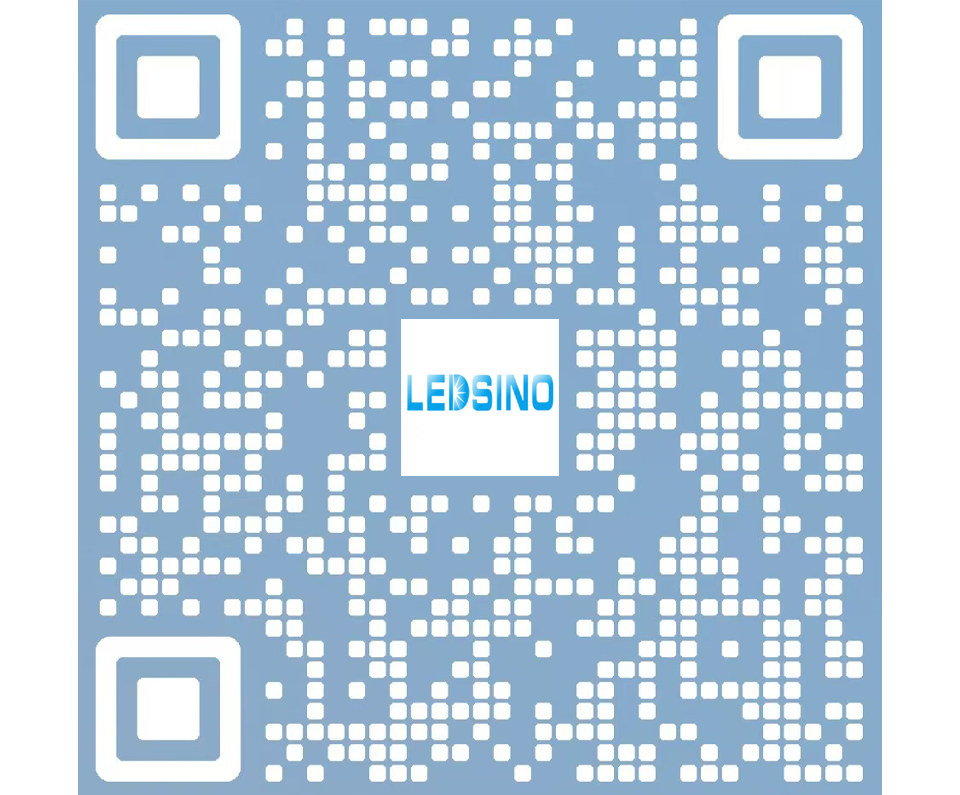
Enter the digital world with our advanced display technologies.

